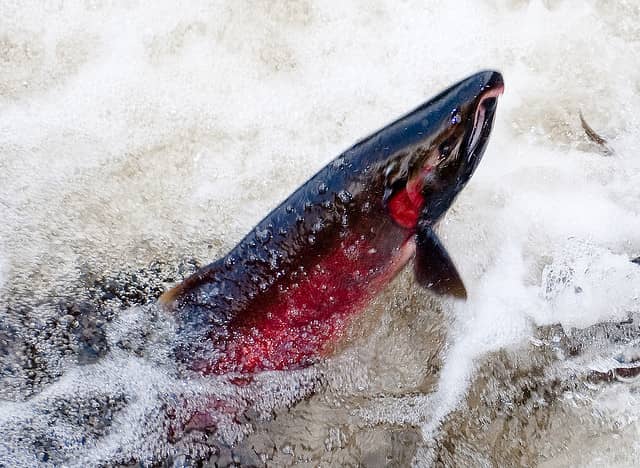How Wild Salmon Find Their Way Home
OutdoorHub Reporters 02.11.13

Salmon can wander for thousands of miles in the vastness of the ocean before returning home to the freshwater river where they were spawned. How have they been doing this for millions of years without modern comforts such as GPS or roadside rest stops? According to the Underwater Times, researcher Nathan Putnam and his team puts forward a theory involving magnets, a little bit of love, and the geometry of the earth.
Young salmon have the amazing ability to attune themselves to unique pattern in the earth’s magnetic field of their native stream. The fish then navigate back to the same location from distances half a world away based on magnetism and “smell.” This process is called “imprinting.”
However, it’s not the only tool in the salmon’s bag of tricks.
“Salmon have to get it right because they only have one chance to make it back to their home river,” Putman said, “so it makes sense that they may have more than one way to get there. The magnetic field is amazingly consistent, so that is a strategy that can withstand the test of time. But they may also use the sun as a compass, track waves breaking on the beach through infrasound, and use smell.”
Putnam’s theory had been swimming around for several years while researchers and salmon hatchery scientists compiled additional data. Then on Thursday, Putnam and his team released conclusive evidence for the idea that salmon might just have a literal internal compass. The theory will also have extensive benefits for scientists–and a few anglers–who want to predict where the fish will be at a given time of year and what their demographics are.
Magnetic fields might also explain why hatchery-raised salmon seem to have trouble navigating back home. The National Oceanic and Atmospheric Adminstration reports that hatcheries supply around 70-80% of the coastal salmon in the Pacific Northwest alone. Putnam proposes that perhaps the equipment in the hatchery fish tanks might be interfering with the salmon’s proper imprinting and create a flawed biological “map.”
“Then they might not be very good at navigating, and that could cause problems,” Putnam said.
This is a high concern because hatchery-bred salmon are not as hardy as their wild counterparts and lead shorter lifespans outside captivity. They also might mate with native salmon and spread weaker genes within the wild salmon population.
Researchers are currently studying hatchery salmon for possible solutions.

